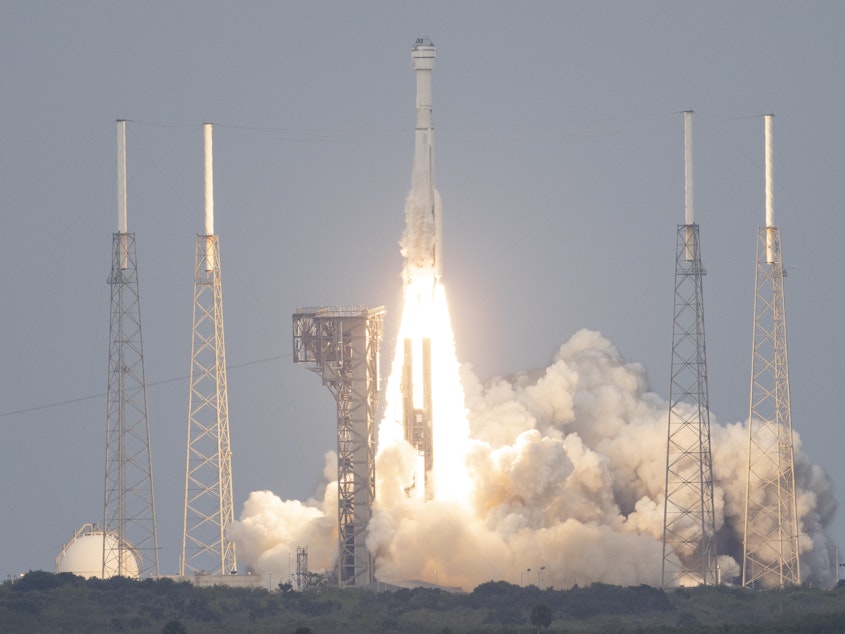Boeing finds new problems with Starliner space capsule and delays first crewed launch

Boeing has indefinitely delayed next month's launch of its Starliner capsule — which would have carried the first humans — after engineers found several worrying problems.
These included the use of "hundreds of feet" of adhesive tape that's flammable and defects with the spacecraft's parachute system. Boeing made the announcement late Thursday at a hastily-called news conference with NASA officials.
It's the latest setback for Boeing which has been plagued by years of development delays and has yet to fly its first crewed Starliner mission.
After the space shuttle was retired in 2011, NASA needed a way to ferry people to and from the International Space Station. In 2014, NASA awarded Boeing more than $4 billion under its Commercial Crew program to build the capsule. At the same time, NASA also selected SpaceX to build and design a competing system which has already sent humans into space ten times (including seven missions for NASA).
Starliner has flown twice. The first mission, in 2019, failed to reach the I.S.S. after its on-board clock malfunctioned. The second test flight, in 2022, did dock with the I.S.S. and was deemed a success. Boeing had been working towards a July 21 launch to send two NASA astronauts to the I.S.S. This mission has been delayed several times and this latest setback is concerning.
Sponsored
Just weeks before the launch attempt, Boeing managers determined that adhesive tape used to wrap and protect hundreds of yards of wiring inside the capsule could be flammable under certain circumstances.
In addition, the lines connecting the capsule to its trio of parachutes were not as strong as Boeing believed. During landing, it's possible that some of the lines could have snapped - potentially endangering the crew. Starliner is designed to land with just two parachutes. But if one parachute failed - the others could have too.
For all of these reasons, Boeing vice president and Starliner program manager Mark Nappi told reporters the company was standing down, "Safety is always our top priority and that drives this decision." A future test flight date is unknown.
Nappi says they'll take the next several weeks to investigate the design issues and come up with potential solutions. For now, Boeing says it's fully committed to the program and has no plans to stop developing Starliner despite being years behind schedule. [Copyright 2023 NPR]


